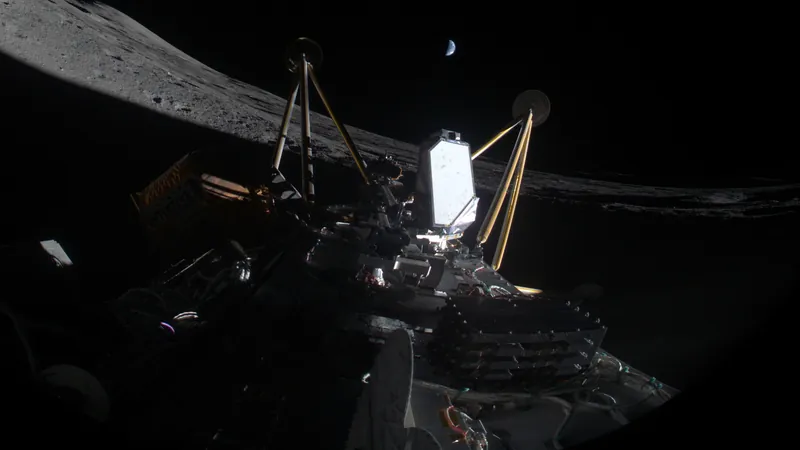
Why Did the Private Athena Lunar Lander Fall Over? The Shocking Truth Revealed!
2025-05-14
Author: Sarah
The Fall of Athena: A Lunar Mystery Unraveled
Earlier this year, the private lunar lander Athena, developed by Intuitive Machines in Houston, met an unfortunate fate shortly after its landing near the lunar south pole on March 6. Just a day after making its descent, Athena was declared non-operational after it toppled over, compromising its ability to harness solar energy.
The Investigative Breakdown: Three Key Factors Behind the Mishap
After an extensive analysis, Intuitive Machines has pinpointed three critical issues that led to Athena's downfall. The first shocker? Signal interference from Athena's laser altimeter. This crucial device, designed to measure distance from the lunar surface, was disrupted during the final descent phase.
CEO Steve Altemus revealed that "signal noise and distortion" prevented accurate altitude readings, which are essential for a safe landing.
Next up: the troublesome lighting conditions! Landing in close proximity to the south pole created long shadows and dim light that severely challenged Athena's landing precision.
Finally, the lander's optical navigation system struggled to accurately identify craters because the data it relied on—the images from NASA's Lunar Reconnaissance Orbiter—did not account for the unique conditions at lower altitudes.
A Missed Opportunity for Science
Athena's mission, part of NASA's Commercial Lunar Payload Services (CLPS) program, was set to carry essential scientific equipment, including Intuitive Machines' own hopping spacecraft "Grace" and the MAPP rover. Unfortunately, the lander’s topple meant these promising technologies remained grounded.
Learning from Failure: The Future of Lunar Exploration
This setback follows Intuitive Machines' previous mission—IM-1—where its Odysseus spacecraft also encountered landing issues, tipping over after breaking its landing legs. Despite this, Odysseus made history as the first private spacecraft to soft-land on the moon and operated for seven days before going dark.
To ensure future missions avoid similar fates, Intuitive Machines is already implementing robust changes for their upcoming IM-3 mission, slated for 2026. Altemus confirmed enhancements such as diverse and redundant altimeters, improved lighting-independent sensors, and an expanded onboard terrain database to boost navigation.
Additionally, advanced machine-learning algorithms will analyze detailed imagery from the IM-2 mission to sharpen future navigation and crater-tracking accuracy.
A Bright Horizon Ahead
Looking forward, Intuitive Machines is determined to rise from the ashes of Athena's failure. As Altemus stated, "Moving forward, we will succeed. Land softly, land upright, land ready to operate." The lunar exploration journey is far from over, and the next chapter promises to be even more thrilling!


 Brasil (PT)
Brasil (PT)
 Canada (EN)
Canada (EN)
 Chile (ES)
Chile (ES)
 Česko (CS)
Česko (CS)
 대한민국 (KO)
대한민국 (KO)
 España (ES)
España (ES)
 France (FR)
France (FR)
 Hong Kong (EN)
Hong Kong (EN)
 Italia (IT)
Italia (IT)
 日本 (JA)
日本 (JA)
 Magyarország (HU)
Magyarország (HU)
 Norge (NO)
Norge (NO)
 Polska (PL)
Polska (PL)
 Schweiz (DE)
Schweiz (DE)
 Singapore (EN)
Singapore (EN)
 Sverige (SV)
Sverige (SV)
 Suomi (FI)
Suomi (FI)
 Türkiye (TR)
Türkiye (TR)
 الإمارات العربية المتحدة (AR)
الإمارات العربية المتحدة (AR)